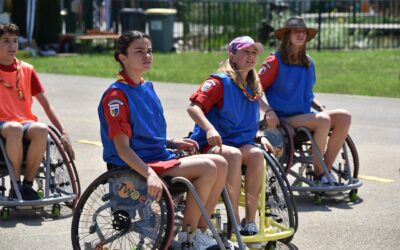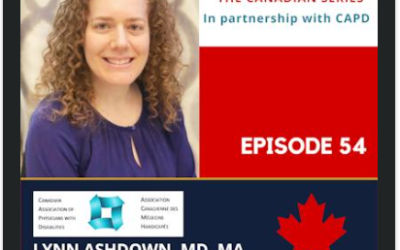Written by admin
The article highlights a crucial gap in current Equity, Diversity, and Inclusion (EDI) initiatives within medical education, specifically focusing on the often-overlooked aspect of disability. The authors emphasize the need for a more comprehensive approach that addresses disability as an integral component of diversity, urging for a shift to “Equity, Diversity, Inclusion, and Accessibility” (EDIA).
The article highlights a crucial gap in current Equity, Diversity, and Inclusion (EDI) initiatives within medical education, specifically focusing on the often-overlooked aspect of disability. The authors emphasize the need for a more comprehensive approach that addresses disability as an integral component of diversity, urging for a shift to “Equity, Diversity, Inclusion, and Accessibility” (EDIA).
Inclusive Curriculum Development:
The call to incorporate disability in EDI discussions is essential. The proposal to include disability as a core topic in health professions education is a step towards recognizing it as a facet of diversity. The suggestion to create a standardized national curriculum is noteworthy, emphasizing an anti-ableist and anti-oppressive approach. This would ensure that future healthcare professionals are equipped with the knowledge and sensitivity required to address the needs of patients with disabilities.
Representation of Learners with Disabilities:
The article rightly points out the underrepresentation of learners with disabilities in medical education. To create a healthcare workforce that truly represents the diversity of patients, it is crucial to encourage greater participation of individuals with disabilities in health professions education programs. However, the call for inclusion extends beyond mere admission; it emphasizes the need for supportive structures to enable the success of these students and views them as valuable assets to the programs.
Revision of Technical Standards:
The proposal to revise technical standards in medical education to emphasize abilities rather than limitations is progressive. This approach not only challenges pre-existing stereotypes but also fosters an environment that promotes the development of core competencies in all learners. The authors rightly advocate for creative approaches and policies to accommodate learners with disabilities, underlining the importance of collaboration with individuals who have lived experiences with various disabilities.
Encouraging Research and Data Collection:
The call to encourage research on inclusive approaches and the dissemination of innovative practices is commendable. The lack of comprehensive data on Equity, Diversity, Inclusion, and Accessibility (EDIA) demographics, particularly concerning disability, is highlighted. The proposal for longitudinal data metrics ensures a sustained commitment to tracking progress in fostering inclusivity.
In conclusion, this article makes a compelling case for integrating disability into EDI initiatives in medical education. The proposed actions not only address current disparities but also lay the foundation for a more inclusive and representative healthcare workforce. Implementing these recommendations would undoubtedly contribute to improved patient care, challenge stereotypes, and enhance the overall quality of medical education.
Annotated by Mohamad Matout
Related Articles
Related
Here are some dos and don’ts to help tackle ableism
Throughout the course of our careers and lived experiences, we have seen the daily ableism people living with disabilities contend with. As professors of education and disability ethics, we have put together the following list of dos and don’ts.
Against Technoableism: Rethinking Who Needs Improvement
If you only read one scholarly work on ableism, read this book. Ashley Shew shares with us her voyage through multiple pathways from able to disabled. She chronicles her unique personal experience, situates this within a strong academic framework, and provides...
The story of Dr. Lynn Ashdown
In this episode, we are joined by Dr. Lynn Ashdown, a patient experience expert who advocates for the inclusion of patients in all levels of healthcare. Dr. Ashdown obtained her medical degree from The University of Ottawa and began her residency in family medicine...




